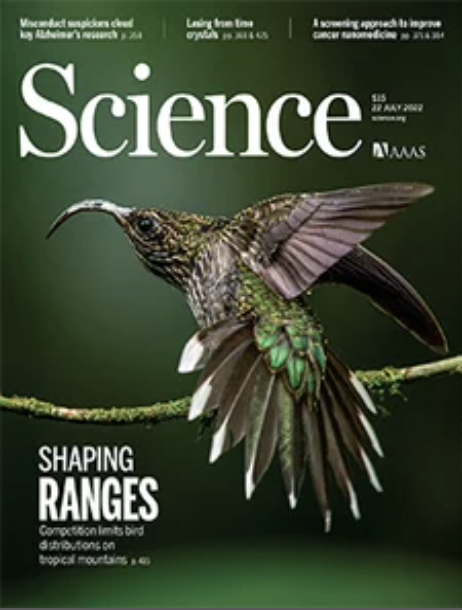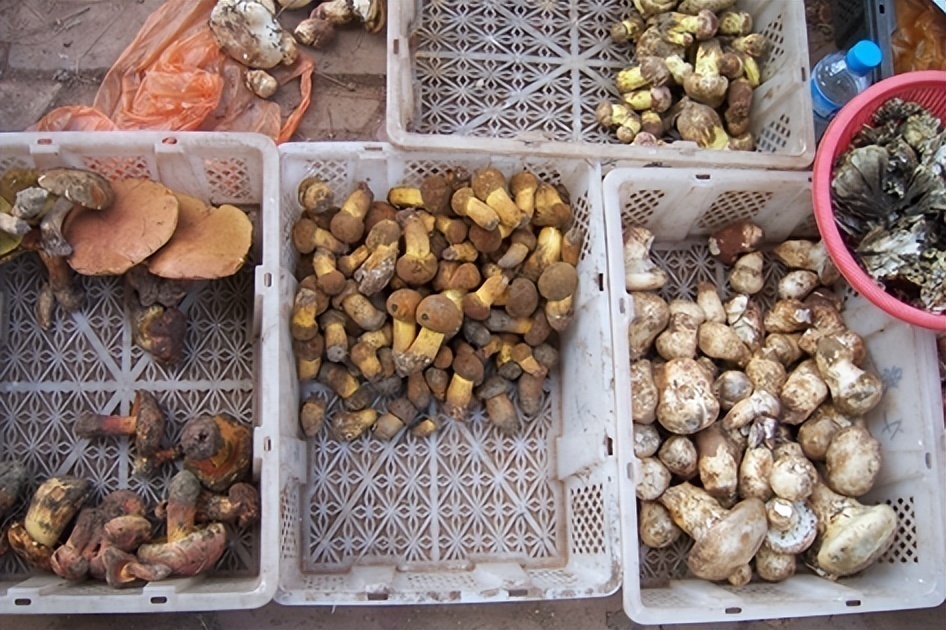"Science" (published 20220722) One -week thesis guide
Author:Scientific network Time:2022.07.24
Compilation | Feng Weiwei
Science, 22 July 2022, Volume 377 Issue 6604
"Science" July 22, 2022, Vol. 377, 6604

Physics Physical Chemistry
Quantum Effects in Thermal Reaction Rates at Metal Surfaces
Quantum effect of metal surface thermal reaction rate
Author: Dmitriy Borodin, Nils Hertlg. Barratt Park, Michael Schwarzerjan, Alec M. Wodtke, ETC. ETC.
Link:
https://www.science.org/doi/10.1126/sclence.abq1414
Summary:
The basic step of accurately describing the surface chemical reaction is a long -term challenge, because the lack of reliable experimental measurement to measure the corresponding rate constant, which makes it impossible for it to strictly verify theoretical estimation.
Even if the hydrogen atomic response on the heat composite of the platinum surface, the previous experimental rate constant is only obtained under great uncertainty. Use speed resolution dynamics and ion -based absolute molecular beam calibration, the author overcomes the experimental difficulties and reports the unprecedented accurate rate constant of the reaction within the wide temperature range.
They also demonstrated a non -parameter model for quantitative reproduction experiments, which opened up new prospects for the growing computing multi -phase catalytic field.
Abstract:
Accurate description of elementary steps of chemical reactions at surfaces is a long-standing challenge because of the lack of reliable experimental measurements of the corresponding rate constants, which also makes it impossible to rigorously validate theoretical estimates. Even for reactions as simple as thermal recombination of hydrogen atoms on platinum surfaces, previous experimental rate constants have only been obtained with large uncertainties. Using velocity-resolved kinetics and ion imaging–based calibration of absolute molecular beam fluxes, Borodin et al. managed to overcome established experimental difficulties and report unprecedentedly accurate rate constants for this reaction over a wide temperature range. They also demonstrate a parameter-free model that quantitatively reproduces the experiment, opening up new vistas for the growing field of computational heterogeneous catalysis.
High Ambipolar Mobility in Cubic Boron Arsenide Revealed by Transient Reflectivity Microscopy
Observe the high bipolar migration rate of cubic arsenic boron -gallium arsenic microscope
Author: shuai yue, fei tian, xxinyu suimohammadjavadjavad mohebinia, xianxin wutian tongzhiming wang, bo wu, qing zhang, xinfeng liu
Link:
https://www.science.org/doi/10.1126/sclence.abn4727 Abstract:
Under room temperature conditions, the migration rate of semiconductor cubes (C-BAS) on electrons is 1400 square centimeters/volt seconds, and the migration rate of load subcourse for the cave is 2100 square centimeters/volt.
Use the pump probe's transient reflectivity microscope to observe the spread of the radiator in the single crystal C-BAS to obtain its migration rate. Through the 600 -nanometer pump pulse of the band gap, the author found that the high bipolar migration rate was 1550 ± 120 square centimeters/volt, which was consistent with theoretical prediction.
At the same place, additional experiments at the 400 -nanometer pump showed that the migration rate was & 3000 square centimeters/volt, and the author attributed it to thermal electronics. The observation of high-load migration rate combines high thermal guidance to make C-BAS use a large number of devices in the field of high-performance electronics and optoelectronics.
Abstract:
Semiconducting cubic boron arsenide (c-BAs) has been predicted to have carrier mobility of 1400 square centimeters per volt-second for electrons and 2100 square centimeters per volt-second for holes at room temperature. Using pump-probe transient reflectivity microscopy, we monitored the diffusion of photoexcited carriers in single-crystal c-BAs to obtain their mobility. With near-bandgap 600-nanometer pump pulses, we found a high ambipolar mobility of 1550 ± 120 square centimeters per volt-second, in good agreement with theoretical prediction . Additional experiments with 400-nanometer pumps on the same spot revealed a mobility of &3000 square centimeters per volt-second, which we attribute to hot electrons. The observation of high carrier mobility, in conjunction with high thermal conductivity, enables an enormous number of Device Applications for C-BAS in High-Performance Electronics and Optoelectronics.
High Ambipolar Mobility in Cubic Boron Arsenide
Cube arsenic boring high bipolar migration rate
Author: jungwoo shi, geethal amila gamage, zhiwei ding, key tian, hwijong lee, gang Chen, ETC.
Link:
https://www.science.org/doi/10.1126/sclence.abn4290
Summary:
Semiconductors with high thermal guidance and high-electronic-hole migration rate are of great significance for electronic devices and photonic devices and basic research.
Among these ultra-high heat-conducting materials, the migration rate of cubes of boron (C-BAS) will reach & 1000 cm square/second/second at the same time. Using optical transient grille technology, the author experimented at the same position of the C-BAS sample at room temperature. Its thermal conductivity was 1200 watts per meter per meter, and the bipolar migration rate was 1,600 cm per second.
Computing from scratch shows that reducing the concentration of ionizing impurities and neutral impurities is the key to obtain high migration and high thermal guidance. Due to high bilateral mobility and ultra-high thermal guidance, C-BAS is expected to become a candidate for the next generation of electronic products. Abstract:
Semiconductors with high thermal conductivity and electron-hole mobility are of great importance for electronic and photonic devices as well as for fundamental studies. Among the ultrahigh–thermal conductivity materials, cubic boron arsenide (c-BAs) is predicted to exhibit simultaneously high electron and hole mobilities of &1000 centimeters squared per volt per second. Using the optical transient grating technique, we experimentally measured thermal conductivity of 1200 watts per meter per kelvin and ambipolar mobility of 1600 centimeters squared per volt per second at the same locations on c-BAs samples at room temperature despite spatial variations. Ab initio calculations show that lowering ionized and neutral impurity concentrations is key to achieving high mobility and high thermal conductivity, respectively. The high ambipolar mobilities combined with the ultrahigh thermal conductivity make c-BAs a promising candidate for next -GieRATION ELECTRONICS.
Chemical Chemistry
PHYSICAL MIXING of a Catalyst and A Hydrophobic Polymer Promotes Co hydrogenation Through Dehydration
The physical hybrid of catalysts and hydrophobic polymers promotes hydrogenation through dehydration
Author: wei fang, chengtao Wang, liang Wang, Lu liu, haangjie li, feng-shou xiao, etc.
Link:
https://www.science.org/doi/10.1126/sclence.abo0356
Summary:
In many restrictions on water restrictions, it is important to selectively remove water from the reaction system, and membrane reactors are usually required. The author found that the simple physical mixture of hydrophobic polyethylene and cobalt manganese carbides can regulate the local environment of the catalyst to quickly transport aquatic products in synthetic gas conversion. This can change the water adsorption balance on the surface of the catalyst, leading to a larger proportion of free surface, in turn increases the synthetic gas conversion rate by nearly double.
Under 250 ° C, the conversion rate of carbon monoxide reached 63.5%, and 71.4%of the hydrocarbon products were light olefins, which was better than polyethylene benzene -phenyl catalysts under the same conditions. Physical hybrid cobalt -manganese carbon/polyethylene benzenezide catalyst has good durability in a 120 -hour continuous test.
Abstract:
In many reactions restricted by water, selective removal of water from the reaction system is critical and usually requires a membrane reactor. We found that a simple physical mixture of hydrophobic poly(divinylbenzene) with cobalt-manganese carbide could modulate a local environment of catalysts for rapidly shipping water product in syngas conversion. We were able to shift the water-sorption equilibrium on the catalyst surface, leading to a greater proportion of free surface that in turn raised the rate of syngas conversion by nearly a factor of 2. The carbon monoxide conversion reached 63.5%, and 71.4% of the hydrocarbon products were light olefins at 250°C, outperforming poly(divinylbenzene)-free catalyst under equivalent reaction conditions. The physically mixed CoMn carbide/poly(divinylbenzene) catalyst was durable in the continuous test for 120 houses. Physics Physics
Amplify Emission and Lasing in Photonic Time Crystals
Aullary laser and laser in photon time crystals
Author: Mark Lyubarov, Yaakov Lumeralex Dikopoltsev, Eran Lustig, Yonatan SharabianD MordEchai Segev
Link:
https://www.science.org/doi/10.1126/sclence.abo3324
Summary:
The regular photon crystal is a spatial periodic structure that has a spatial periodic structure that can inhibit the spontaneous launch of the transmitter embedded in the structure in the structure. In the photon time crystal, the refractive index is adjusted cyclically at the previous period of ultra -fast time.
The author explores theoretically what happens when a transmitter is placed in such a time crystal. Compared with conventional photon crystals, the author finds that time crystals should be enlarged and laser.
Abstract:
Regular photonic crystals are structures in which the refractive index is spatially periodic and can suppress the spontaneous emission of light from an emitter embedded in the structure. In photonic time crystals, the refractive index is periodically modulated in time on ultrafast time scales. Lyubarov et al . explored theoretically what happens when an emitter is placed in such a time crystal. In contrast to the regular photonic crystals, the authors found that time crystals should amplify emission, leading to lasing.生物多样性Biodiversity
INTERSPECICIC Competition Limits Bird Species ’Ranges in Tropical Mountains
Bate competition limits the scope of activity of birds in tropical mountains
Author: Benjamin G. Freeman, Matthew Strimas-Mackey and Eliot T. Miller
Link:
https://www.science.org/doi/10.1126/sclence.abl7242
Summary:
The geographical range of species is limited by climate and species interaction. The climate is the general cause of why species can only live in the narrow altitude of the tropical mountains with very biological diversity, but competition will also limit the altitude of species.
The author tests the comparative predictions of these assumptions through the global comparative test of bird altitude in 31 mountain areas, and uses more than 4.4 million citizen scientific records from the global citizen project EBIRD to define the altitude of each region.
They found strong evidence to prove that competition, not climate, is the main driving factor in narrow altitude. These results emphasize the importance of species interaction in shaping the distribution of species in tropical mountainous areas. Tropical mountains are the hottest biodiversity hotspots on the planet.
Abstract:
Species' geographic ranges are limited by climate and species interactions. Climate is the prevailing explanation for why species live only within narrow elevational ranges in megadiverse biodiverse tropical mountains, but competition can also restrict species' elevational ranges. We test contrasting predictions of these hypotheses by conducting a global comparative test of birds' elevational range sizes within 31 montane regions, using more than 4.4 million citizen science records from eBird to define species' elevational ranges in each region. We find strong support that competition, not climate, is the leading driver of narrow elevational ranges. These results highlight the importance of species interactions in shaping species' ranges in tropical mountains, Earth's hottest biodiversity hotspots.编辑| 方圆
Capture | Guo Gang
Cooperation: [email protected]
Submission: [email protected]
Like this article? Praise + watch support!



- END -
A non -wake -up lion was bombed?It's not just good -looking, it's also delicious

Science Fiction Network June 13 (Wang Ziyu) Recently, the post -00 chef from Guang...
Can you eat it?

Every year to summer, it will be the season of eating bacteria (mushrooms) in Yunn...